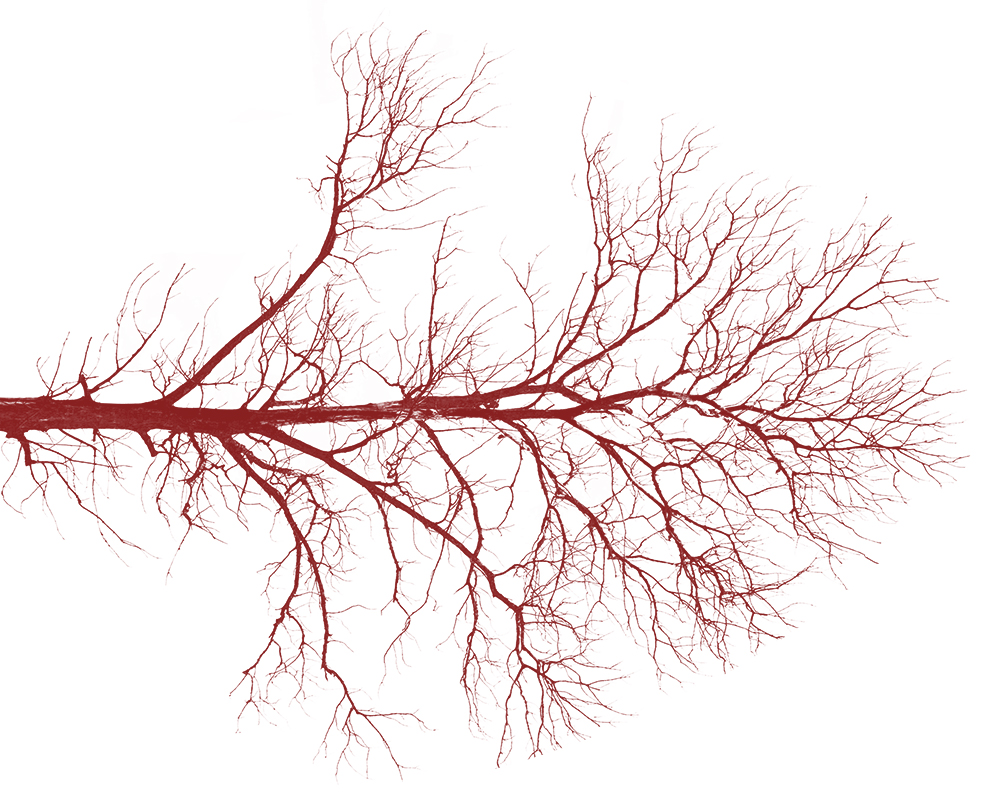

The Next Therapeutic Target for
Ocular Angiogenesis &
Cancer Drug Resistance (feat. TME)

Stem cell factor mediates multiple cellular responses by binding to and activating the receptor tyrosine kinase, c-KIT (CD117). Since its discovery in 1987, c-KIT has been known as an oncogene, and SCF/c-KIT signaling is required for the development of hematopoietic stem cells, melanocytes, and germ cells. In 2012, our team first made a novel discovery that SCF/c-KIT signaling is one of the key drivers of angiogenesis and vascular permeability. Hypoxia stimulates the expression of c-KIT, which in turn enhances the expression of VEGF, IL-8, and cyclin D1, resulting in the increased neovascularization. Besides, the activation of c-KIT signaling induces vascular permeability of endothelial cells, which is critical to the development of edema in patients.
The mechanism of SCF/c-KIT regarding to the mediation of angiogenesis and vascular permeability in response to hypoxia is demystified as below.
1Hypoxia stabilizes HIF-1α
2HIF-1α stimulates the expression of angiogenic factors including SCF/c-KIT and VEGF/VEGFR, and activates glycolytic metabolism of endothelial cells
3SCF/c-KIT and VEGF signal transductions are activated, respectively
4Phosphorylation of VE-Cadherin provokes its internalization, increasing permeability of vascular endothelial cells
5GSK3 phosphorylation augments nuclear translocation of β-catenin, regulating angiogenesis and proliferation
6Phosphorylated FOXO, competing for limiting CBP/p300, induces HIF-1α transcriptional activity, leading a vicious cycle of reinforced angiogenesis and vascular leakage

To date, VEGF is the only proven retinal disease target. However, we have verified that SCF/c-KIT, independently of VEGF, induces neovascularization and vascular permeability, which are not mediated by anti-VEGF drugs. This finding could be an answer to the reason why up to 40% of patients are refractory to anti-VEGF treatment. For further information about SCF/c-KIT pathway as a novel ophthalmology target, please see our publication here.
In oncology, tumor microenvironment (TME) is a new battlefield for every anti-cancer drugs. TME plays a critical role in multiple aspects of tumorigenesis and therapeutic resistance. TME is characteristically hypoxic, and induces SCF/c-KIT expression. In addition, Mast Cell whose molecular marker is c-KIT molds the TME by recruiting MDSC, TAM, and TAF, making anti-c-KIT an attractive strategy for the tumor immunosuppression. At a molecular level, the mutation or overexpression/ amplification of c-KIT is reported to be widely engaged in the pathogenesis of small cell lung carcinoma, gastrointestinal stromal tumor, leukemia, glioblastoma, ovarian cancer, and systemic mastocytosis.

 ddd
ddd

